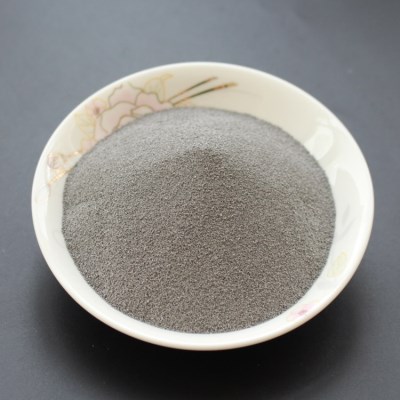Company news
Principle of desulfurization and desulfurization of reduced iron powder.
The carbon and sulfur in the reduced iron powder are all impurity elements, and its high content directly influences the application of iron powder.
Therefore, in the production, when we desulfurize the iron powder through a reduction, the sulfur content can be greatly reduced. After the second reduction, the carbon can be reduced to below the national standard.
1. Decarbonization.
The carbon in sponge iron powder is mainly soluble in Fe formation cementite (Fe3C).
In the process of secondary reduction of iron powder, except for the oxygen and carbon in the iron powder, the following decarburizing reaction is mainly as follows:
〔C〕+2H2=CH4 + 10.8kcal/mol (1)
〔C〕+H2O=H2 + Co -28.3kcal/mol (2)
(1) the reaction is exothermic reaction, and it is very limited for the iron powder with high carbon content to rely only on dry H2 decarburization.
2. Desulfurization reaction.
In the process of secondary reduction, the sulfur in the atmosphere of H2 and sponge iron (in the form of FeS) occurs as follows:
Reaction (2) is an endothermic reaction, so water vapor with a high amount of water vapor is helpful for the high decarburization of iron powder at high temperature.
After decarbonization, the carbon content in reduced iron powder can be reduced to below 0.03%.
FeS + H2 = Fe + H2S
Thus the sulfur content of iron powder is greatly reduced.
For example, the sulfur content of sponge iron powder can be reduced to less than 0.02% in the second reduction with ammonia decomposition.
The reduction of the sulfur content of sponge iron can be reduced to 0.015% by the secondary reduction in the wet conversion of natural gas.

Categories
Latest News
- mild steel iron powder, Mild Seel Iro Powder: A Comprehesive Overview2024-04-09
- magnetite and iron powder,The Properies of Mageie2024-04-09
- iron dust for sale, high quality iron powder for sale2024-04-09
- carbonyl iron powder, Introduce carboyl iro powder2024-04-02
- iron oxide powder pigment, What is iron oxide powder pigment?2024-04-02
Contact Us
Contact: Ms.Anna Fei
Phone: +86-15036079565
Tel: +86-371-64368520
Email: info@meiqicn.com
Add:BEISHANKOU TOWN, GONGYI CITY, HENAN, CHINA 451200
